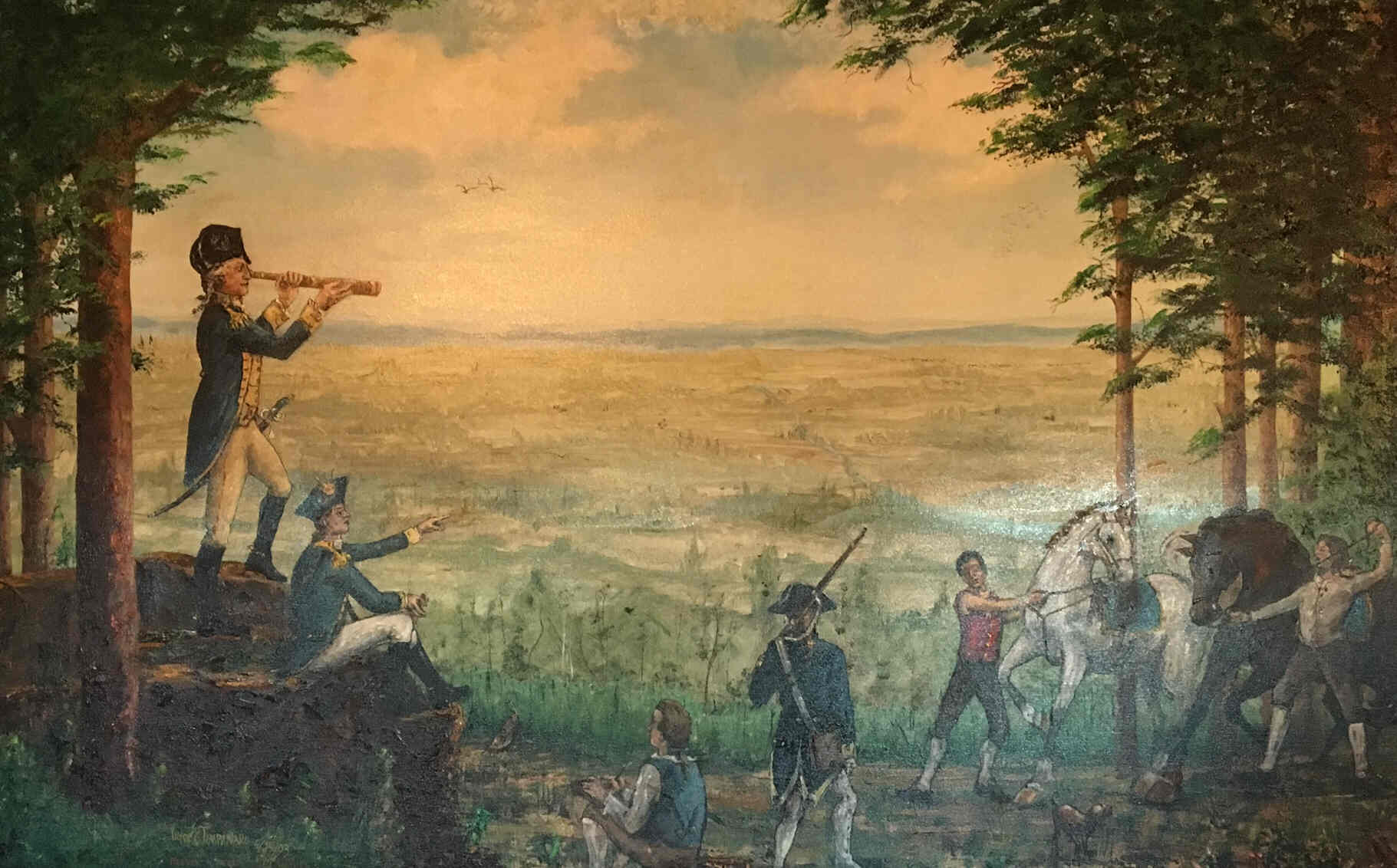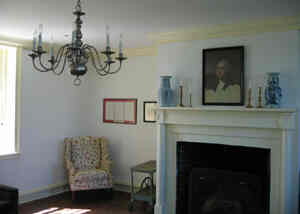
That history, while not widely known, is recognized today. Land that Washington’s Troops once occupied is a park and two houses that military commanders stayed at have been restored and are still in use today.

Several of the roads that we know today existed then and were well traveled during the war. Maps of the time show that the main east-west road was the Old York Road. It incorporated what today is Somerset Street in Raritan along with the main streets in Somerville, Bridgewater, and Bound Brook. Some of the other roads that appear on a 1766 map are Washington Valley Road, Chimney Rock Road, Foothill Road, and Vosseller Avenue.

Each Bridgewater land owner had a large plot of land. The 1766 map displays the individual property boundaries – (lots). It shows that most lots were over 100 acres with many over 500 acres. Only a few of the lots were less than 20 acres. (Today most lots in Bridgewater are less than half an acre).
troops spent time in Bridgewater

Bridgewater twice served as an encampment for General Washington’s Army during the Revolutionary War. The first was for six weeks May 28th – July 2nd 1777. It was in a section of Bridgewater that was known as Middlebrook. Washington’s troops were positioned in the mountains just north of where Route 22 is today on both sides of Vosseller Avenue. This was a strategic position as on a clear day the Americans using the telescopes of the era were able to watch the British troops as far away as New Brunswick.
Some local history sources (perhaps with some embellishment) say that it caused the British troops, who knew they were being watched, to choose an alternate longer route when they traveled to meet up with their main army in New York State. The extra time spent traveling caused thousands of British troops to miss the battle at Saratoga resulting in a U.S victory. Some call that battle the turning point of the war.
Washington at his lookout site in Bridgewater

So it is “likely” that the first time that the modern U.S. flag was flown by the U.S army was in Bridgewater.

It was during this second Middlebrook Encampment that George Washington stayed at the Wallace House in Somerville. The Middlebrook encampment is today commemorated by a sign and a 13 star version of the flag on 20 acres of open park land on Middlebrook Road.

The historic Van Veghten house in Bridgewater is located two tenths of a mile off Finderne Avenue inside an industrial complex. While it seems so out of place in that location, it obviously was there first. The Van Veghten Family built the house around 1720.
The house, which is on the northern side of the Raritan River, initially had 836 acres of land with it. Today just 1 acre remains associated with the house. During the Revolutionary War for a time the house served as the headquarters for U.S. Quartermaster Nathanael Green as the Van Veghten Family ffered the house for use by the U.S. Army. And use it they did. Many troops were camped on the property and in one instance a social was held in the house for army officers. It was written that at this social George Washington danced with Mrs. Green for “upwards of three hours”.

Historical enthusiasts are welcome to visit this house. It is open every Tuesday from noon to 3 PM and every second Saturday of the month from noon to 3 PM. There is no charge. The house has a wealth of information as it holds hundreds of books on the history of Somerset County. The society members are usually there and are very helpful should one have a specific historical topic in mind for their research.

During the American Revolution the house was the headquarters for Generals Benjamin Lincoln and William “Lord Stirling” Alexander who was Washington’s second in command. In April of 1777 the British surprised the U.S Army in the “Battle at Bound Brook” and marched to the Van Horne House to try and capture any U.S. officers who were at the house. General Benjamin Lincoln had been present, but he was able to make a quick escape. One written account of the battle said that he escaped “clad only in his breeches”. With the U.S. having fled the home the British then used it as an outpost.
The Battle at Bound Brook

In 2002 the house was put to excellent use when the “Heritage Trail Association” moved their headquarters into the building. This group promotes local history by offering bus tours and lectures. The Van Horne house can be rented for business meetings, parties, and even weddings.